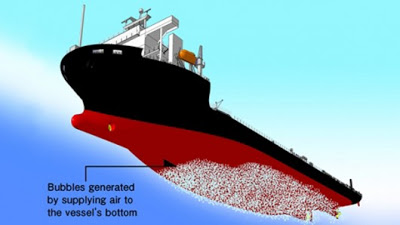Green Energy

 Source: MHI & University of Bonn
Source: MHI & University of Bonn
- Overhauling America’s Transportation System
By Ben Swerdlow, Policy Extern In connection with my previous blog post advocating for self-sufficient green communities, I am going to now turn to the future of transportation, with an emphasis on the transportation of freight. This week’s post specifically...
- Hybrid Power Generation Systems
Combined Heat and Power (CHP)Combined Heat and Power (CHP) is the simultaneous generation of usable heat and power (usually electricity) in a single process. CHP plants enable the recovery of waste heat and / or better overall utilisation of the heat...
- Convert Your Car Into A Water Powered Car!
It's time to beat insane fuel prices by converting your car into a water powered car!Stop wasting your hard earned money at the pump - and reduce your environmental impact at the same time. Save up to 70% on fuel costs while cleaning up your...
- Landfill Gas Power Plants And Biomass
Landfill gas power basically refers to the two greenhouse gases of carbon dioxide and methane. It is therefore a form of biomass used in the generation of energy whereby biomass refers to the microorganisms found in organic materials from animals and...
- How Do Solar Cells Work?
Solar cell is an electrical device which converts the light energy directly into electricity utilizing photovoltaic effect. It is also defined as the form of photoelectric cell having electrical characteristics like current, voltage and resistance. There...
Green Energy
Friction Reduction on Ship Hulls by blowing bubbles: by Mitsubishi

Feb 2012: Mitsubishi Heavy Industries (MHI) and transport company Nippon Yusen Kaisha (NYK) has planed and tested out effectiveness of a system which will reduce the frictional resistance between the seawater and vessel's bottom by using a layer of air bubbles. The Mitsubishi Air Lubrication System(MALS) has been coupled with high-efficiency ship hull for a container ship . The company claims which will in turn will reduce the CO2 emission by 35% compared to conventional carrier designs.
To test out this MALS , MHI installed it on a module carrier of NYK subsidiary called "YAMATAL" and verified the CO2 reduction efficiency. This module carrier was choosen as they have a shollow -draft hull that generates relatively low water pressure which minimizes the amount of electricity required by an air blower to supply air to the vessel's bottom. Even the flat wide bottom retains the supplied air supplied under the vessel's bottom.
It was quite successful, as MHI was expecting the reduction of CO2 by 10% . After this the company looked into the second application of the technology with the completion of the conceptual design of the "MALS-14000CS," a New Panamax size 14,000 TEU (twenty-foot equivalent) container vessel.
Same as YAMATAI, MHI expects the MALS-14000CS will give the result of 10 percent reduction in CO2 emissions through the MALS. But they went for additional design features by which MHI expects an overall cut in CO2 emissions of 35 percent. These new additions are as follows:
1. A new high-performance hull form that places the bridge relatively forward
2.Exhaust funnels at the stern, and additional container space under the accommodation quarter.
3. Ship will coupled with a two-engine & two-shaft propulsion system. These will reduce the carbon emission by 24 percent.
4. Diesel engine and waste heat recovery system will be fully electronically controlled which will provide another five percent.
5. A Sox scrubber to remove sulfur oxide from flue gas, and a ballast water treatment system.
Researcher are developing superhydrophobic surfaces modeled on the water fern salvinia molesta, which is able to remain completely dry when submerged by trapping a layer of air on the surface of its leaves using tiny hairs. Combining MALS with such a surface would mean the air wouldn't need to be pumped continually to the bottom of the vessel.
This plant fern surrounds itself by a layer of air that enables it to remain dry when underwater. While it has been understood for some time that this is a result of tiny hairs on the plant's leaves which trap air, the problem in mimicking this phenomenon has been to make the layer stick. When replicated, this superhydrophobic surface disappears after several hours in moving water, but salvinia molesta can stay "dry" even when submerged for weeks.

- Overhauling America’s Transportation System
By Ben Swerdlow, Policy Extern In connection with my previous blog post advocating for self-sufficient green communities, I am going to now turn to the future of transportation, with an emphasis on the transportation of freight. This week’s post specifically...
- Hybrid Power Generation Systems
Combined Heat and Power (CHP)Combined Heat and Power (CHP) is the simultaneous generation of usable heat and power (usually electricity) in a single process. CHP plants enable the recovery of waste heat and / or better overall utilisation of the heat...
- Convert Your Car Into A Water Powered Car!
It's time to beat insane fuel prices by converting your car into a water powered car!Stop wasting your hard earned money at the pump - and reduce your environmental impact at the same time. Save up to 70% on fuel costs while cleaning up your...
- Landfill Gas Power Plants And Biomass
Landfill gas power basically refers to the two greenhouse gases of carbon dioxide and methane. It is therefore a form of biomass used in the generation of energy whereby biomass refers to the microorganisms found in organic materials from animals and...
- How Do Solar Cells Work?
Solar cell is an electrical device which converts the light energy directly into electricity utilizing photovoltaic effect. It is also defined as the form of photoelectric cell having electrical characteristics like current, voltage and resistance. There...
